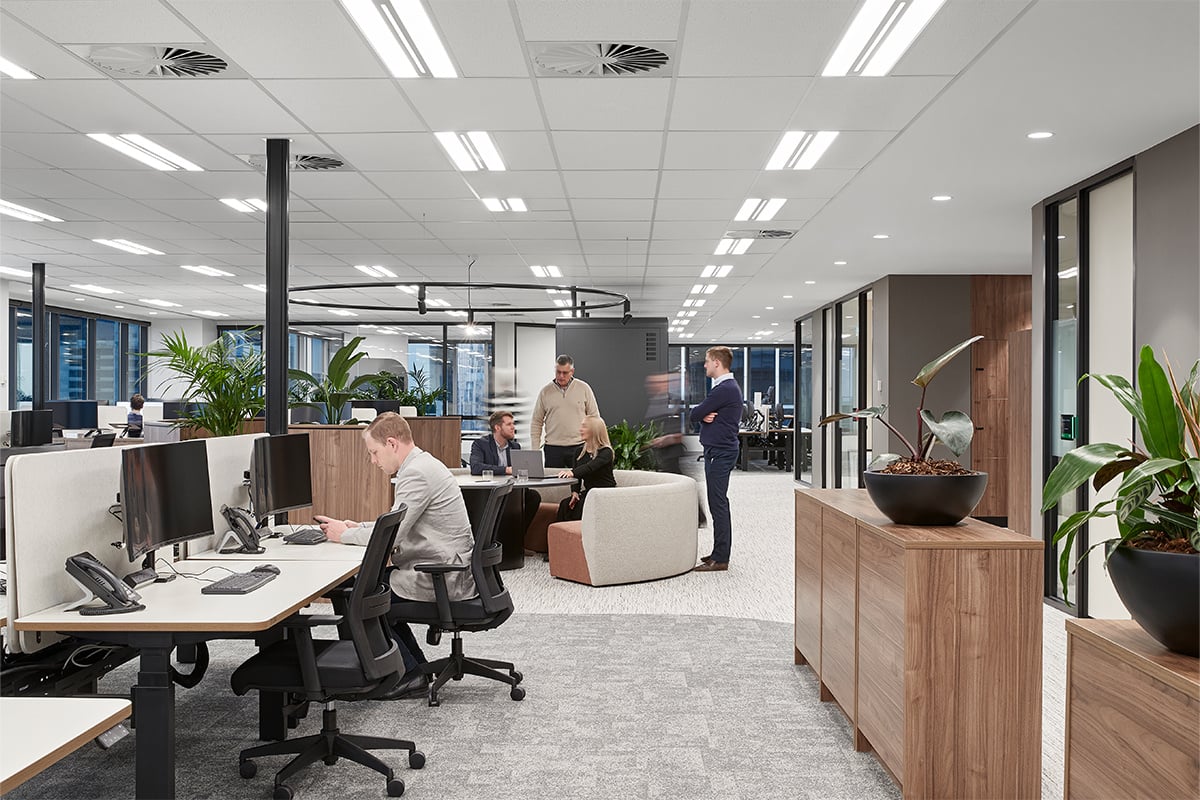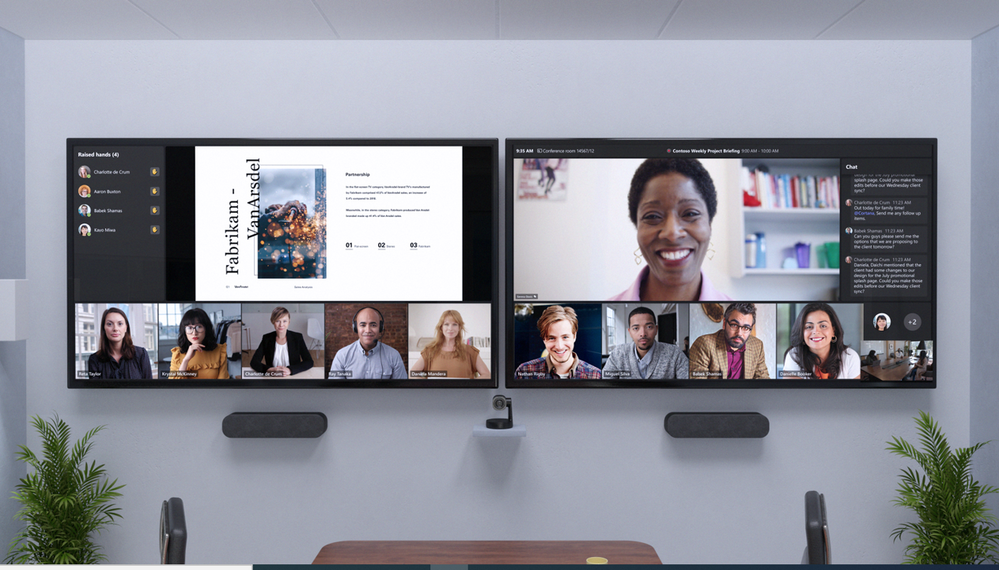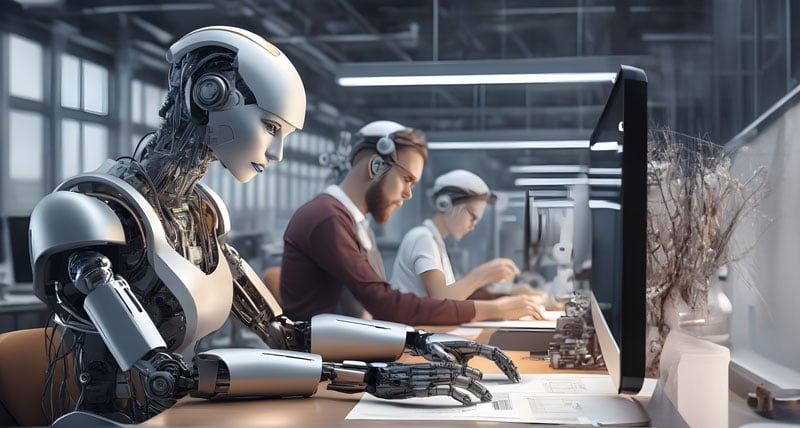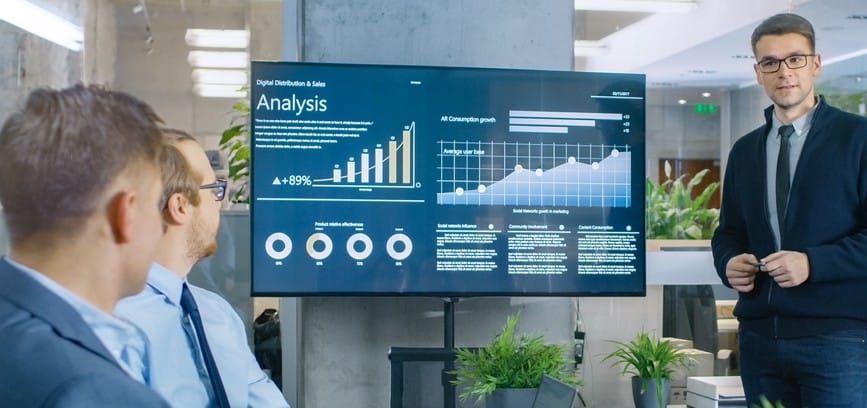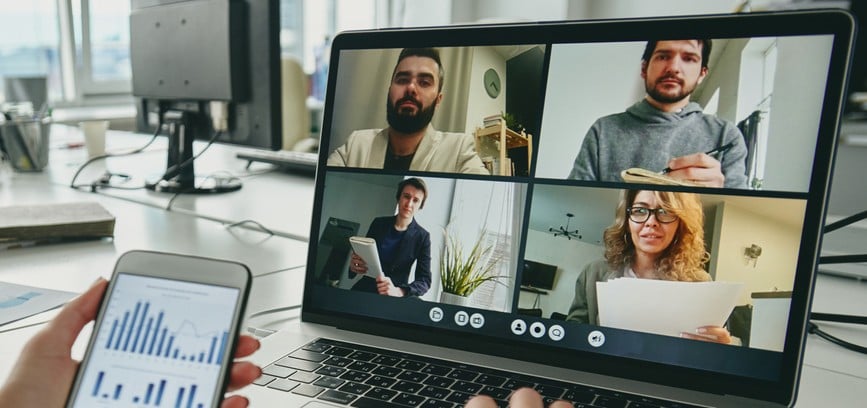The workplace has changed forever and is continuing to evolve after the rapid transformation generated by the pandemic. Whether employees are working in the office or remotely, a successful workplace now needs to be a digitally inclusive workplace. But what does this actually mean, and what needs to be done?
We posed these questions, and more, to John Corbett, Cisco Workplace and Real Estate Strategist. Our discussion uncovered how offices need to change for a new working world and revealed how Cisco is creating an immersive experience that levels the playing field for all employees – regardless of their location.
The challenges of the hybrid workplace
“We’re starting to notice that working from home has become the norm, and going into the office is ‘extraordinary’” says John.
He says that this in itself throws up some interesting observations.
“Digital environments are frictionless – the transition between activities and engagement is smooth. By comparison, the office of old was rather clunky. The traditional office is architected to be fixed and time-bound and thus dynamically opposed to digital workflows. The office of now and into the future needs to catch up and we need to be smart at how we go about that.”
So if the traditional office is ‘hard’, how do we make the new workplace as ‘frictionless’ as the digital environment we’ve become accustomed to?
John explains that this now means a reversal of what we saw 18 months ago, when we first got our stay at home orders. That is, looking at what we’re doing seamlessly and quickly online, and figuring out how we can replicate that speed and seamless efficiency in the office.
“We’ve become very attracted to working in a dynamic digital-only environment. Meeting with ten people online is easy, but traditionally, at the office, it is complicated. So let’s make connecting the office, to the people in the office and the people outside the office, easy, on-demand and seamless.
“Let’s get the office to become an active contributor to our continuously evolving and transitioning workflow, rather than having to slow down workflow in response to the time bound, fixed nature of the office.
“Why should we have to book a room to meet with someone? Do we book a laptop at home when we meet with someone? No. So the office should not be any different in our ability to seamlessly connect with other people or resources.”
This has been the focus at Cisco: seamless transitions and ensuring the built environment supports interaction in all its forms.
What does this look like in practice?
“Say I want to have a video conversation with two of my colleagues. One is with me in the office and the other is remote. Traditionally, I would have to book a room to do that, and in doing so I would roll around in Outlook, etc in order to do that. If we decided to have this meeting on-demand, I might hop into a room and then connect my laptop with a cable, or dial in and enter passwords, etc. What if I could just walk into the room, click the green button on my laptop to start my meeting like I usually would from home, and the equipment in the room automatically connected with me? What if it was fully automated, without touching a thing?
“My environment should work for me, connecting to me, not me having to put all this effort into connecting to it. This is similar to you navigating across a digital workflow on your laptop. All the applications on your laptop know it’s you. You don’t have to tell them, and those software applications intuitively respond to your demands. The office workflow experience should be no different,”
Another challenge of the hybrid work environment is a lack of visibility. Whereas companies have a thorough understanding of their office’s physical space, they generally don’t have that same understanding of the workspace outside of that.
John says that “the physical office distributes a subliminal service that we take for granted. I.e. Your desk has an ergonomically assessed chair, power, and competent network connectivity.
“The distribution of this subliminal service needs to extend beyond the physical office. With 100 of your staff having to work remotely overnight, your office just went from one to 101 offices. If they were in the office you would have line of sight of the ability of the office and its infrastructure to serve your staff in order to help them get their work done. We need to be able to deliver the same level of service beyond the boundaries of a physical office and satisfy ourselves that our company is capable of intuitively servicing our employees’ workflow needs at a hardware and software level, at any time, anywhere.”
At Cisco, this means they are “levelling the playing field” by creating a digitally inclusive workplace
What is digital equality or inclusivity?
“It’s our responsibility to provide [our employees with] a first-class workplace experience whatever their location. And this creates a more inclusive environment,” John emphasises.
John’s definition of digital equality has two primary components:
“One part is physical. You’ll often find pockets of competency in an office – so good tech in a boardroom, or large meeting rooms but nowhere else for example. It is inevitable that people will gravitate towards “better”, thus creating false economies resulting in uneven demand bottlenecks. A broader, more distributed delivery of seamless, consistent, and easy-to-use competency, in smaller sizes, increases supply elasticity and helps to balance out uneven consumption demand.
“The other part is equity beyond the physical environment. It used to be that if you couldn’t be in the office, you couldn’t work. And while we’ve seen this change during the pandemic, it’s still not good enough. We need to level the playing field further so that those who work from home aren’t viewed as passengers, but active members of the group. Why should a woman who has decided to start a family, be burdened with the uncomfortable choice of a potentially inferior place in the workplace, because she is not physically in the office?.
“For example, equitable equipment, such as the Webex’s background noise suppression AI, removes barriers to communication such as needing to mute and unmute yourself during a call. Therefore, the external environment now no longer impairs or disadvantages the external participant.”
How technology is levelling the playing field
We spoke with John about how technology is helping to overcome the challenges of the hybrid workplace and create a digitally inclusive environment for all employees.
AI translation
“Instant translation tools are helping us manage differences that arise from cross-cultural connections and workplaces across geographies.”
Searchable meeting recordings
“I frequently work with people on the East Coast of the US who are having meetings at 2am my time. While we have a recording of that meeting, I don’t need to hear the whole thing, if I choose not to. I just need the snippets relevant to me. I can now search keywords and the technology takes me to each place within the meeting, where that topic was discussed… I can also see other areas of the meeting that were considered important to the meeting host, during that meeting. Additionally, I can also raise questions after the fact, too. This technology means, I can manage my time investments as I consider appropriate and I am not having to crumble my own work time boundaries to be an active participant in a global team while still remaining an active member.”
Smart tech used to diagnose connection issues
“Webex, Cisco’s collaboration platform, uses innovative technology to interrogate data and identify why you might be incurring an inferior meeting experience. It “sees” every bit of equipment (and related data) that is contributing to the engagement and can determine if, for example, it’s your headset that’s causing the problem, or something else.”
A look to the future
What does John see on the horizon of the future of work?
Smart tech in the home office
“Smart devices, such as the Webex Video Endpoint, can continually collect intelligence to pick up on factors that create fatigue such as heat, air quality, or even environmental dangers like carbon monoxide for example. All of a sudden, something as simple as a Webex video endpoint for the home could be used to help improve the environmental quality of a “workplace beyond the office”.
Scaling digitally by leveraging the tech we already have
“We need to scale digitally. Technology needs to be distributable and singularly scalable across multiple platforms, devices and locations, including the physical environment and “lean out” operational processes. We should be looking at how we architect this so we can leverage the technology we already have, and scale more on the “back end” rather than the front end, as an iPhone does for example.”
John concludes that you should “think of your office as one big device that connects people. Just because people are not there doesn’t mean they can’t be connected.”


